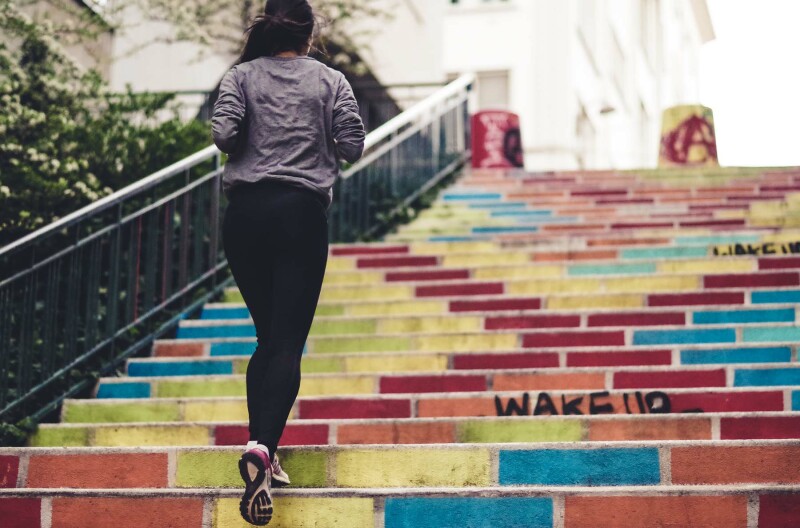The running industry has experienced dramatic changes each year since the pandemic began — and those changes bode well for increased interest in running apparel for the more casual consumer. In 2021, revenue from performance running footwear sales in the U.S. was 19 percent greater than 2019, according to Retail Tracking Service data from The NPD Group.
While some of this growth can be attributed to upward price pressure, unit sales have shown a positive trend in the past year, increasing by 10 percent year-over-year, and reversing a softening of unit sales that occurred within certain retail channels in 2020, when the pandemic significantly reduced brick-and-mortar store traffic.
A combination of behavioral factors indicates that the consumer desire to engage in running as an activity has steadily grown since the onset of the pandemic. Consumers have been purchasing running shoes and apparel to enable healthy, outdoor activity that supports their revamped lifestyles.
Three overarching factors are the driving forces behind why the running industry has landed where it is today.
- Since the onset of the pandemic, consumers have sought safe and socially distant activities that nevertheless provide some level of interaction with others.
- Second, the pandemic has changed the nature of work to be more home-based and, as a result, fashion and function are now intersecting in the footwear and apparel being sold to the runner.
- Finally, consumers are investing in a more holistic, healthy lifestyle that not only includes exercise, but also better-quality rest and a work-life balance.
Understanding each of these influences provides opportunities to reach running consumers in impactful ways.
Everyone Is More Active
Since March 2020, the popularity of sport activities that are socially distant, yet provide some degree of connection to others, has spurred unprecedented revenue growth in equipment sales for golf, which is up 67 percent in 2021 versus 2019, followed by racquet sports (up 59 percent) and cycling (up 45 percent).
Moreover, much of the sales gains for these categories stemmed from products designed and merchandised for newer entrants. This trend also translates to the running market, which likely experienced its level of growth because of newer entrants joining the activity.
NPD’s consumer data indicates that the composition of the performance running shoe market is still roughly the same as it was before the pandemic, with men making up 52 percent of the wearers; however, there has been a demographic shift to an older wearer. Consumers between the ages of 45 and 54 have shown the highest market-share gains, growing two points in 2021, versus 2019. On the other hand, consumers ages 18 to 34 lost four points of share during the same period.
We now know that today’s emerging running shoe buyer is older, likely newer to purchasing performance running shoes and is considering purchasing through the lens of a new workplace reality. Using a range of census data and other resources that track credit card use, NPD estimates that anywhere between 12 and 28 million U.S. workers are now working from home. This shift has dramatic implications on wardrobe. In effect, 20 percent of consumers who previously worked in an office setting have a different context with which to view their wardrobe choices.
The Impact on Apparel Sales
The work-from-home shift is accelerating the trend of having apparel that is more comfortable, “run- ready” and available for any time use. According to an NPD survey fielded in January 2022, 43 percent of consumers do not miss getting dressed up for work or special occasions — a 10-point increase since the same question was asked in September 2020. This indicates that wardrobes moving to a more casual style could be a permanent shift.
“Sweatshirt” is an activewear category that has greatly benefitted from the consumer’s need for a versatile piece of apparel. This category has demonstrated a solid sales improvement throughout the pandemic and is poised to continue growing.
Contrast this trend with the technical outerwear segment, which has struggled throughout the pandemic and is currently challenged to regain share because consumers are buying fewer technical pieces designed only for the outdoors, in favor of apparel that can be worn in both indoor and outdoor environments. The growth in sweatshirt sales, at the expense of technical outerwear, underscores the market switch to products that deliver on utility and comfort.
A Quest for Wellness
As a final layer, consumer sentiment towards a holistic view of health and fitness will create openings for running, as a healthy physical activity, as well as opportunities for the industry to improve its merchandising and assortments.
Based on a December 2021 survey NPD fielded in conjunction with CivicScience on health and wellness desires, there is a clear and ongoing interest in pursuing health and fitness activities — but at the same time, consumers are diversifying their wellness goals to include improving sleep and work/life balance.
While diet and exercise still topped the list of planned health and wellness priorities for 2022, this more balanced approach to health and wellness to include more areas relevant to both mental and physical health is of value to the running industry. Instead of advertisements that feature an athlete running though the rain in breathable technical apparel, the industry might consider featuring that same athlete down for some R&R in a piece of branded apparel. The value of comfort is a critical messaging and design feature for today’s running consumer.
Chances are good that the runner of 2022 is newer to the activity, has a different work- and home-life structure compared to two years ago that has transformed daily routines from dressing to exercising and has changed health and wellness goals to support an overall better quality of life.
For the running industry, these shifts lend themselves to pockets of growth and opportunity, which is all the more reason for brands and retailers to take consumer engagement and merchandising to the next level.






